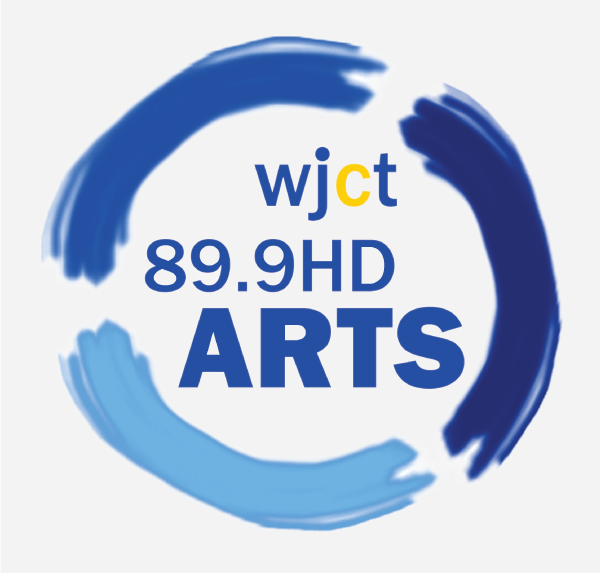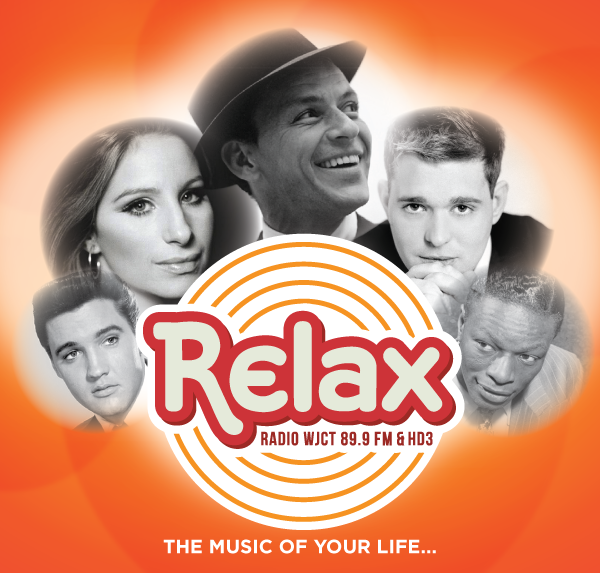WJCT 89.9FM HD Radio Stations
89.9HD2 WJCT Arts
A nationally syndicated classical music service dedicated to live classical music programming 24 hours a day, seven days a week.
Unlike most mainstream classical music stations, Classical 24 adheres to a “clock” that typically consists of one or two short selections at the beginning of the hour, followed by a longer work such as a symphony, and then a short piece or two to close the hour. A brief pre-recorded “sound bite” interview with the composer, conductor or soloist of the next piece is sometimes played immediately prior to the piece, as an introduction. (Channel 89.9HD2)
89.9HD3 WJCT Relax Radio
Relax Radio presents a wide variety of music that creates an easy listening sound for Baby Boomers, and for a wider audience as well. The music spans the spectrum of time from Bing Crosby to Michael Buble’. Experience the relaxing presence of musical genres from The Great American Songbook, Light Jazz and Oldies. Relax Radio broadcasts seven nights a week at midnight on 89.9FM and is available through online streaming 24 hours a day, seven days a week at wjct.org/relax. (Channel 89.9HD3)
- Now streaming online 24/7
- More than 3,500 songs
- Listen anytime on WJCT HD3 and anywhere through the WJCT App
- Seven nights a week at midnight on 89.9FM
Relax Radio is your music station – listen all day at work and all night at home!
89.9HD4 WJCT Holiday Radio
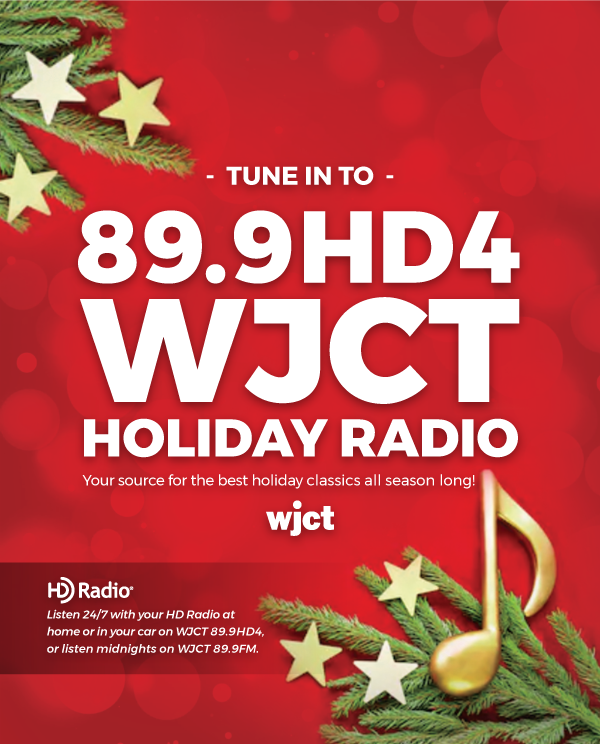
For a limited time, tune in to 89.9 FM HD4 for the best holiday classics selected by Music Director and host of “Electro Lounge” David Luckin.
HD4 is only available over-the-air and is not being streamed online. To tune in to HD4, you must have an HD Radio.
What you need to know about HD Radio®
Get more clarity and info from your radio stations
Maybe you’ve heard something about HD Radio® reception, and the promise of better sound and more listening options. Sounds neat. But what does that mean for us listeners? We put together this video as a quick overview of HD Radio broadcasts. Watch it and then read below for more information. http://www.crutchfield.com/S-6Lii5Qv034N/learn/learningcenter/car/hdradio.html
What is HD Radio?
HD Radio technology allows broadcasters to transmit a high-quality digital signal. For listeners who have an HD Radio receiver, the benefits are:
- FM radio that sounds almost as good as a CD
- AM radio that sounds as good as traditional FM
- No more static, pops, crackles or fades…and no subscription fees
- Displayed information, including station ID info, song and artist titles, weather, traffic, and emergency alerts
- Increased listening options with station multicasting
Let’s take a look at each of these in turn.

FM radio with near CD-quality sound
Digital technology allows a radio station to transmit more information in the same radio wave. Primarily, this means higher quality sound. So much more so that FM transmissions can sound nearly as good as CDs, and definitely much better than the hollow sounds of old analog FM. How much better the music sounds will depend on your local stations and your radio gear.
AM radio that sounds as good as FM Stereo
AM radio uses smaller sections of bandwidth than FM. There is not enough bandwidth for HD Radio to give AM stations the same CD-quality signal as FM stations. But there is enough room to give AM stations clarity equivalent to current analog FM stereo radio. This boost in sound quality makes AM radio a viable alternative to FM, which means more options for listeners.
No more static, pops, crackles, fades…and no monthly payments
The digital signal is less vulnerable to reception problems. The radio tuner’s digital processors eliminate the static, pops, hisses, and fades caused by interference. You hear only clear, clean, and rich sound. Should you lose the digital signal for some reason (obstructing terrain, nearing the edge of the broadcast area, etc.), HD Radio technology defaults back to analog mode, similar to the way non HD Radio receivers switch from stereo to mono mode when receiving a weak signal. And like analog radio, HD Radio is subscription-free.
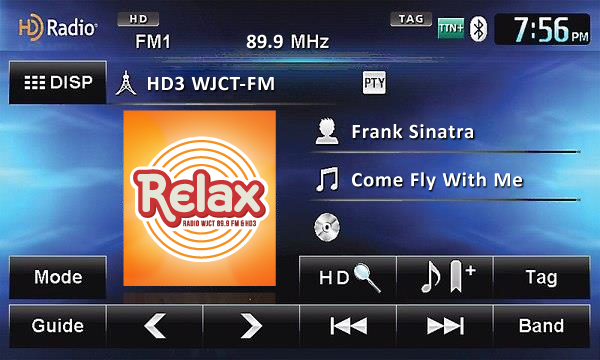
Transmission of additional information
Another benefit of digital radio is the radio station’s ability to transmit additional information along with the music signal. This can take the form of scrolling text on your receiver’s display, such as a song’s artist and title and station call letters. HD Radio also supports Artist Experience — with compatible receivers you can view album art, logos, and more, when provided by the station. Stations can also include local and regional information, such as weather updates, emergency alerts, or even traffic jams and road construction. Traffic data is delivered up to 10 times faster than other broadcast methods.
Multicasting
In addition to duplicating their analog programming with an HD Radio broadcast, stations can subdivide the digital portion of their signal. This allows a station to “multicast” — that is, broadcast two or more programs simultaneously. Listeners might have a choice of, say, a sports game or music. These additional channels can only be received on an HD Radio tuner. But just as cable TV allowed specialized networks to flourish, multicasting provides the potential for stations to offer more niche programming — ultimately giving the listener a greater variety of formats to choose from.
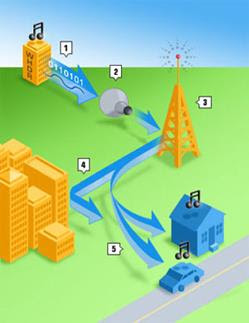
The technology behind HD Radio signals
A company called iBiquity Digital created the technology to make this happen. They license this technology to radio stations and consumer electronics manufacturers.
Unlike the conversion to digital television a few years ago, consumers have a choice of whether to participate in the upgrade. In contrast to the television industry, where the analog signal was turned off by Federal decree, radio stations will continue to broadcast the analog signal along with the new digital signal. If we choose to not upgrade our radios, we can still listen to analog AM and FM radio — although we’ll be missing out on the digital-only features and multicasting channels.
How does it work?
HD Radio technology works pretty much just like traditional analog radio transmission:
- The radio station sends out the analog and digital radio signals, along with a third signal for text data.
- The digital signal is compressed before being transmitted.
- The three-layered signal is transmitted from the radio station’s upgraded digital transmitter.
- Multipath interference, caused by the signal reflecting off of buildings, is ignored by the digital radio, which is able to discern the true signal and ignore interference.
- Your radio receives the signal and, depending on your equipment, you hear either the digital or analog feed.
What HD Radio technology is not
HD Radio technology is not a subscription service, like satellite radio. It is the same free, over-the-air broadcast radio that we’ve always known. Only better. You just need gear that includes a built-in HD Radio tuner to enjoy it. Everyone can choose to continue listening to their current radios, but eventually all AM/FM radios will incorporate digital technology. It is a natural evolution of the medium.
HD Radio is not the same as satellite radio. Rather, it’s an improvement to terrestrial AM and FM radio. Satellite radio, on the other hand, is an alternative to broadcast radio, in the same way that cable or satellite TV are alternatives to broadcast television. Even if you do have satellite radio, there are often times when you want to listen to your local station — and that’s where HD Radio comes in.
Hear it for yourself!
If you want to join the digital radio world, it’ll mean spending a little more for a new car stereo or a home stereo with an HD Radio tuner than for comparable systems without the HD Radio option. But prices continue to decrease as more manufacturers enter the HD Radio receiver market. HD Radio receivers are being offered as optional equipment in an increasing number of new automobiles.
Find the HD Radio sound in your town
You can go to hdradio.com to see the stations in your area that are on-the-air with HD Radio, as well as those stations that have licensed the technology and will eventually be broadcasting with it.
Now that HD Radio tuners and receivers are commercially available, more radio stations are investing in the upgrade. They want to keep up with the enhanced sound quality of digital radio. And whether we upgrade right away or wait until our next vehicle has a built-in HD Radio receiver, we, as listeners, win.
